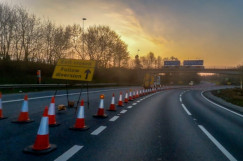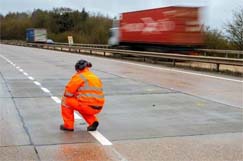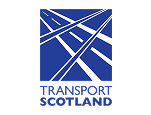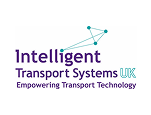Audi is exhibiting what it calls an innovative pre-development in which a mono camera uses Artificial Intelligence to generate an extremely precise 3D model of a vehicle's environment.
The company says the new Audi A8 is the first car in the world developed for conditional automated driving at Level 3 (SAE), with its Audi AI traffic jam pilot handling the task of driving in slow-moving traffic up to 60 km/h (37 mph), provided that laws in the market allow it and the driver selects it.It adds that a requirement for automated driving is a mapped image of the environment that is as precise as possible ' at all times and that AI "is a key technology for this".A project team from the Audi subsidiary Audi Electronics Venture (AEV) now is presenting the mono camera at the NIPS conference in Long Beach, California Workshop on Neural Information Processing Systems (NIPS). They explain that the concept uses artificial intelligence to generate an extremely precise 3D model of the environment. This technology makes it possible to capture the exact surroundings of the car.In a statement, Audi says, "A conventional front camera acts as the sensor. It captures the area in front of the car within an angle of about 120 degrees and delivers 15 images per second at a resolution of 1.3 megapixels. These images are then processed in a neural network. This is where semantic segmenting occurs, in which each pixel is classified into one of 13 object classes. This enables the system to identify and differentiate other cars, trucks, houses, road markings, people and traffic signs."The system also uses neural networks for distance information. The visualization is performed here via ISO lines ' virtual boundaries that define a constant distance. This combination of semantic segmenting and estimates of depth produces a precise 3D model of the actual environment."Audi says its engineers had previously trained the neural network with the help of 'unsupervised learning.' In contrast to supervised learning, it says, unsupervised learning is a method of learning from observations of circumstances and scenarios that does not require pre-sorted and classified data. The neural network received numerous videos to view of road situations that had been recorded with a stereo camera. As a result, the network learned to independently understand rules, which it uses to produce 3D information from the images of the mono camera. The project of AEV holds great potential for the interpretation of traffic situations.Along with the AEV, two partners from the Volkswagen Group are also presenting their own AI topics at the Audi booth for this year's NIPS. The Fundamental AI Research department within the Group IT's Data:Lab focuses on unsupervised learning and optimized control through variational inference, an efficient method for representing probability distributions.An Audi team from the Electronics Research Laboratory of Belmont, California, are demonstrating a solution for purely AI-based parking and driving in car parks and on highways. In this process, lateral guidance of the car is completely carried out through neural networks. The AI learns to independently generate a model of the environment from camera data and to steer the car. This approach, the company explains, requires no highly precise localisation or highly precise map data.
























